Mac in time: 35 years of Apple's legendary Macintosh
From the original Macintosh, IIci, Quadra and iMac to the MacBook Air and Mac mini and iMac Pro
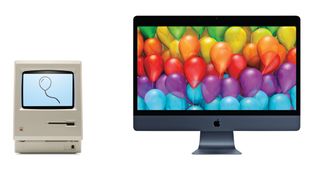
Today marks the 35th anniversary of the original Apple Macintosh − the computer that kick-started the PC revolution as we've known it.
Since its release on January 24 1984, the Apple Macintosh – and the Macs that followed it – have had a huge impact on the PCs and laptops we all use.
To celebrate the Macintosh's 35th birthday, here's a potted history of Apple's ever-evolving machine − the first mass-market personal computer to offer a graphical user interface.
35 years ago, Macintosh said hello. It changed the way we think about computers and went on to change the world. We love the Mac, and today we’re proud that more people than ever are using it to follow their passions and create the future. pic.twitter.com/oUQDJN3jRUJanuary 24, 2019
1984 − All-in-one beginnings
On January 24, Apple CEO Steve Jobs reveals the first Mac to the world − an 8MHz 68k all-in-one with a 9-inch display, 3.5-inch floppy drive and 128k of RAM. Its biggest selling point is its graphic user interface - including elements from legendary Palo Alto research company Xerox Parc - that can be controlled with a mouse. The first Mac even packs in two then-revolutionary applications: MacPaint and the MacWrite word processor.
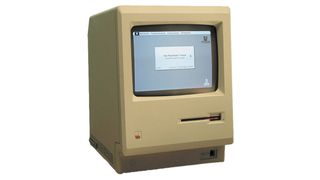
It retailed for $2,495, was 14 inches tall and weighed 16.5 pounds (around 7.5Kg), but when placed in its optional carrying case, the system weighed about 22 pounds (around 10kg).
The Mac also launched with that famous US$1.5 million Super Bowl ad by Ridley Scott.
1985 − Office hits the Mac
It's a common myth that Microsoft is an enemy of the Mac. However, it was actually one of its first major partners, a year after the Mac launched. Microsoft delivered two exclusive apps (that you might have heard of) called Word and Excel. At this time, Microsoft also bought PowerPoint from a company called Forefront.
Get the best Black Friday deals direct to your inbox, plus news, reviews, and more.
Sign up to be the first to know about unmissable Black Friday deals on top tech, plus get all your favorite TechRadar content.
In addition, 1985 saw the arrival of the first Apple laser printer and the Aldus PageMaker desktop publishing program − two developments that kick-start the desktop publishing revolution that Macs were so famous for. By the end of 1985, co-founders Steve Jobs and Steve Wozniak both left Apple, while Microsoft unleashed Windows 1.0 − a move that proved to be a key milestone in the evolution of the personal computer.
1986 − SCSI is key
The Mac gets a major upgrade in the form of the Macintosh Plus. It now sports 1MB of RAM and SCSI: a new peripheral connection standard that enables devices such as printers and external hard drives to be daisy chained together. The Mac operating system reaches version 3.0 and includes such enhancements as the ability to nest folders inside one another.
1987 − Business is targeted
The Macintosh Plus makes way for two new Macs: The Macintosh SE offers a choice of two floppy drives or an internal hard disk, while the Macintosh II is aimed at business users. The Mac II has a 256-colour 13-inch display, a 16MHz processor and can be specced with up to 128MB of RAM. Mac OS, meanwhile, has reached the lofty heights of version 5.1 and enables background printing.
1988 − CD-ROM points the way
Next Apple introduces the System 6.0-powered Macintosh IIx: one of the first personal computers to sport a CD-ROM drive. At the same time, Steve Jobs reveals the first fruits of his new computer company, NeXT. It's an all-in-one box called the NeXT Cube that ships with a magneto-optical drive (instead of a floppy) and has a 17-inch monitor as standard. Steve Jobs is already taking the foward-looking approach to future technologies that we'll see with later Macs.
1989 − The first Mac laptop
Apple introduces three new Macs − the SE/30, Mac IIc and Mac IIci. Of these, the Mac IIci is the most interesting. It's a modular Mac with a separate colour monitor and a more compact desktop case, but ships with a 25MHz 68k processor − making it the speediest Mac made to date.
Apple also introduces its first laptop − the 7.25kg Mac Portable in September. It cost $6,500. At NeXT, Steve Jobs reveals NeXTstep: a new Unix-based OS that has a big bearing on the future direction of latter-day Macs.
1990 − Mass market computing
Apple introduces its fastest computer yet − the 40MHz Macintosh IIfx. It's designed to combat the perception that PCs running DOS are much faster than their GUI-wielding Mac rivals. Microsoft Windows 3.0 makes its debut in the same year at a time when Apple has 20% of the total computing market.
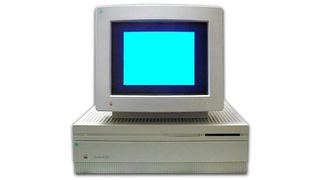
1991 − Performance is the key
Apple ups the ante on the PC, launching six new Macs, including two high-end Quadras − desktop tower PCs with Motorola 68040 CPUs up to 2.5 times faster than their predecessors. Apple also introduces a new range of Mac portables called PowerBooks: the first laptops to have keyboards at the back and the trackpad at the front. Mac OS reaches System 7.0.
1992 − Apple hits the buffers
The wheels start to come off the Apple bus. Firstly, it ships a range of underpowered consumer Macs called Performas. Then Microsoft teams up with Intel to deliver better-performing x486 PCs running the increasingly-popular Windows 3.1. Things are going better at NeXT, with version 3.0 of the NeXTstep OS transitioning from Motorola 68K to Intel CPUs. It's released the following year.
1993 − Windows takes a bite
Apple introduces 19 new Macs split across six different ranges, encompassing the ColorClassic to the low-end LC, mid-range Centris and upmarket Quadra. In addition to Performas and PowerBooks, Apple announces that it's shipped its 10 millionth Mac, but competition's getting tougher and Microsoft says Windows is now being used by over 25 million people.
1994 − The transition to PowerPC
Apple starts the first major transition that it will make during the Mac's 25 year history. It begins with the arrival of the first three Power Macs − machines that run on PowerPC RISC (Reduced Instruction Set Computer) architecture. The PowerPC chips are much, much faster than the CISC-based chips that Apple has been using up until now and are the result of an alliance between Apple, IBM and Motorola. 1994 also sees the arrival of System 7.5.
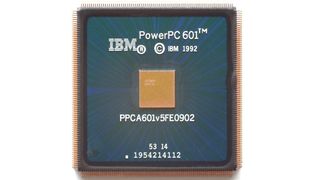
1995 − The Mac can't compete
Apple is hit with a double whammy around this time: the arrival of Windows 95 and the continued success of Intel's unbelievably popular Pentium CPUs. Apple's PowerPC-equipped Macs are selling well, but the rest of its line-up underwhelms. Apple licenses its OS to belatedly compete with the Windows and Intel systems, but by September Steve Jobs is telling Fortune that he knows how to turn Apple's fortunes around and no-one at the company will listen.
1996 − Jobs is back
In February, Steve Jobs shocks many by telling Fortune: "If I were running Apple, I would milk the Macintosh for all it's worth − and get busy on the next great thing. The PC wars are over. Done. Microsoft won a long time ago." Apple finally lays the old 68k processors to rest and begins work on System 8.0 − the next version of the Mac OS. By the end of the year Apple also acquires Jobs' company NeXT and its NeXTstep operating system. Steve Jobs is back in the fold, which turns out to be a prelude to Apple becoming the company we know today.
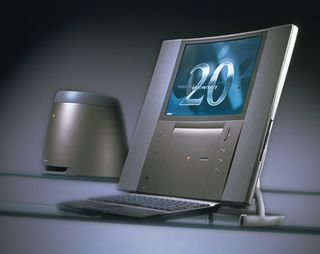
1997 − Jobs gets back to basics
Apple has too many product lines, too few customers and is haemorrhaging money. Jobs, now interim CEO, explains Apple's predicament to Time in October, saying: "Apple has some tremendous assets, but I believe without some attention, the company could, could, could... could, could die." Apple persuades Bill Gates to buy $150 million worth of shares in the company. Jobs kills off the Mac clones. The Mac OS reaches System 8 and Apple starts work on Rhapsody, the precursor to Mac OS X. Year end sees Apple shipping Macs with PowerPC G3 chips that easily outperform their predecessors.
1998 − The iMac heralds a new era
Steve Jobs continues to wage war on Apple's inventory, killing off the Newton PDA. He focuses the company on a new product that takes Apple back to its origins: the iMac. Jobs' vision takes shape as an all-in-one system boasting a 233MHz PowerPC G3 processor, 32MB of RAM, a 4GB hard disk drive and a 15-inch display. It has no floppy disk drive or legacy ports, but instead offers easy internet hookup and USB − a nascent peripheral connection from Intel. It's a smash hit with consumers worldwide.
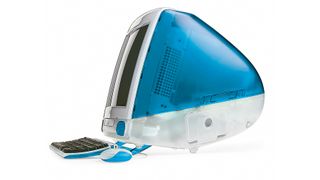
1999 − G4 speeds ahead
The iMac gets faster and becomes available in more enticing colours. It's joined by the bondi blue Power Mac, which includes G3 PowerPC processors running up to 450MHz. Apple also introduces a new range of G3 laptops, including the toilet seat-shaped iBook. The biggest surprise is the Power Mac G4 tower, which Apple calls the 'world's first desktop supercomputer'. Finally, Apple announces AirPort, the first 802.11b Wi-Fi router and Mac OS X Server − the world's first taste of a major leap in the Mac user interface.
2000 − OS X shows its face
Steve Jobs heralds the consumer version of Mac OS X, with the first betas appearing at the end of the year. Ultimately, it looks good, but lacks features and is too slow. It is, however, very different from System 9. Apple's existing Mac products − the iMac, iBook, Power Mac and PowerBook − get speed bumps and colour changes, rather than anything revolutionary. There's also the launch of the Power Mac G4 Cube − a headless Mac that harks back to Steve Jobs' days at NeXT. It's a flop as it is too expensive and suffers from cracks in the casing.
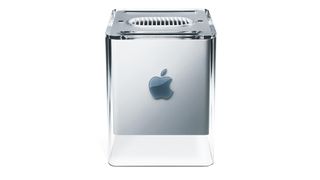
2001 − The spinning beach ball era
Apple ships Mac OS X 10.1, featuring the Aqua colour scheme, use of translucency and missing features. It's still very slow and the 'spinning beach ball of death' quickly becomes a familiar phrase in a Mac user's vocabulary. From a design point of view it's Apple's Windows Vista − all style and substance that was too slow to actually use.
Apple also reveals a totally new design for its laptops, with the PowerBook packing a 15-inch widescreen display and G4 CPU into a 1-inch-thick titanium case. The first iBooks make their debut, but the revamped iMac is a disaster: its patterned Blue Dalmation and Flower Power case designs keep buyers away. Finally, Apple releases a 5GB music player called the iPod, while Microsoft launches the still-trundling Windows XP.
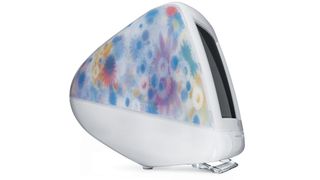
2002 − The OS X update cadence takes off
Apple launches a revamped version of the iMac with semi-spherical base and a flat panel display that 'floats' on a cantilevered chrome arm. It also shows off new consumer iBooks, revamped G4 Power Macs and the eMac, which is aimed at schools. OS X 10.2 Jaguar also comes into the fray, offering 150 new features and a long-awaited speed boost.
2003 − A complete refresh
Apple kills off the Mac OS Classic mode and revamps the entire Mac line: iBooks, PowerBooks, Power Mac G4 towers, the iMac and the eMac. A major speed boost also arrives with the Power Mac G5 in June. It has two 64-bit PowerPC G5 processors from IBM running at 2.0GHz apiece. The iPod hits 40GB and is accompanied by the launch of the iTunes Store and the arrival of the iPod and iTunes on Windows.
2004 − The iMac as we know it
The year is dominated by the iPod rather than the Mac, with Apple even touting the Mac as being 'from the creators of iPod'. The iMac gets a major revamp − the floating LCD and hemispherical base replaced by an all-in-one design that packs a computer behind a flat panel LCD − so we've had a very similar iMac design for a decade now. Apple is now in rude health, but it's PC market share falls to its lowest point: just 3% worldwide.
The UK's first Apple Store opens in Regent Street, London. Over the coming months Apple Stores prove to be invaluable PR for the company as Apple desktops, laptops and iOS devices become ever more recognisable.
2005 − The G5 is here, but it can't compete
IBM delivers the first dual-core PowerPC G5 chips to Apple, enabling it to offer Power Mac G5s to its professional customers with two dual-core CPUs inside. However, IBM isn't able to deliver what Apple really needs − a fast, low-powered PowerPC G5 chip that can be used in Apple's ailing iBook and PowerBook line.
And so, in June, "hell freezes over" when Jobs announces that Apple is to undergo its third major transition − a major switch over to Intel processors, meaning that Apple hardware no longer will be differentiated from that in PCs. Mac OS X 10.5 'Tiger' is announced in April.
The Mac Mini also takes a bow in January 2005 with PowerPC G4 processors, and has now been through numerous revisions. From modest beginnings, it's now a very powerful machine available with Intel Core i7 processors.
2006 − Intel takes the Mac
Every Mac that Apple makes ditches the PowerPC chip in favour of Intel Core Duo processors, starting with the iMac, Mac Mini and MacBook Pro in January, and ending with the Mac Pro in August. By the end of the year the MacBook Pro has been revamped again, this time sporting Core 2 Duo processors.
Boot Camp, also introduced this year, enables all owners of Intel Macs to dual boot their Macs with Windows. Universal applications for both Intel and PowerPC aren't that common, but Apple's Rosetta software enables PowerPC apps to run on Intel Macs.
And then there were the Get a Mac ads. Not exactly Apple's classiest hour.
2007 − Portable Macs become performance powerhouses
Apple's year kicks of with a bang and they announce 8-core Mac Pros will be available as a buy-to-order option. Apple adopts the Intel Santa Rosa chipset for the MacBook Pro in August and revamps the iMac so that it now sports an aluminum and glass enclosure with Intel Core 2 Duo CPUs.
2007 also sees the introduction of the iPhone, with banners at Macworld Expo in January referring to the company's history and declaring "the first 30 years were just the beginning".
Windows Vista launches, and is widely criticised, before OS X 10.5 Leopard goes on sale in October. It becomes Apple's biggest-selling OS X upgrade so far.
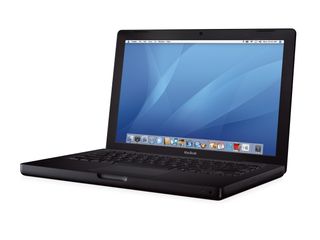
2008 − The MacBook Air leaves the envelope
Apple's most successful year ever kicks off with the announcement that the Mac Pro is to offer 8-core processing as standard, plus there are faster iMacs, MacBooks and MacBook Pros. Apple also announces the MacBook Air − an ultra-light notebook with a multi-touch trackpad for gestures.
By the end of the year, the MacBook and MacBook Pro get another revamp, this time with a new 'unibody' enclosure that sees the bottom cases milled from solid block of aluminium.
2009 − A smaller MacBook Pro
Steve Jobs announces in June that OS X 10.6 Snow Leopard enables all apps to harness the power of multi-core processors.
This year is, however, more notable for the long-awaited release of the 13.3-inch version of the MacBook Pro − the natural successor to the 12-inch version of the PowerBook G4.
2010 − The future is download
The Mac App Store takes a bow and foreruns an optical drive free-future for the Mac. It requires the v10.6.6 update for Snow Leopard, which will become a sticking point for the release of OS X Lion the year after.
The 11-inch MacBook Air is also introduced, amid much speculation that Apple would release a killer machine to rival all the cheap PC netbooks that were around at the time. It decides to kill them with the iPad instead.
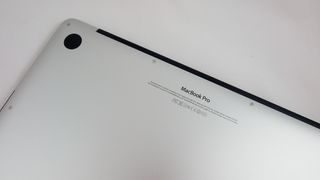
2011 − Thunderbolt points to faster interfaces
OS X Lion is released in July, the first version of OS X not to be released on disc in one format or another. A USB flash version is offered, allowing those who have issues connecting to the internet to use the store. Many who haven't upgraded to Snow Leopard are caught out because they don't have access to the Mac App Store.
Also in 2011, Apple ships the first MacBook Pros featuring Intel's Thunderbolt tech, which uses the same physical port as Mini DisplayPort. It hasn't yet taken off, though continues to feature on all new Macs.
The tiny Mac mini is also introduced, showing that Apple is still finding new form factors for its iconic Mac PC.
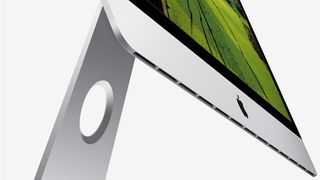
2012 − Retina displays come to the Mac
Fans of the long-neglected Mac Pro line finally gets a fillip with the news that there will be an announcement of a new version in 2013.
The summer sees OS X 10.8 Mountain Lion hit the Mac App Store, which continues the trend of OS X Lion to add an iOS-style sheen to OS X and introduces many of the same naming conventions for apps.
The end of the year features a revised Mac mini as well as a new iMac, with an even thinner display − just 5mm at the edges.
The MacBook Pro is revised but also gets a welcome boost in the form of a new Retina display version and a slimline unibody build with no optical drive. Both 15- and 13-inch versions are released in 2012, with a revision in early 2013. These new models are also notable for their HDMI ports.
2013 − Enter the Mac Pro
After the MacBook Pro revision comes a further enhancement for the MacBook Air.
The Mac ends the year on a high, with the release of the Mac Pro as well as OS X 10.9 Mavericks (Apple says it ran out of big cat names). Mavericks wasn't a great leap forward and had its problems, but it is still extremely successful for the company.

2015 − Back to basics with the MacBook
In 2015, Apple release the its new vision for its laptops: the MacBook. Taking design cues from the latest iPhones and iPads of the day, the new MacBook was a brilliant encapsulation of Apple's past, present and future. It is also a pretty great laptop in its own right.
Apple also updates its MacBook Air and MacBook Pro models, and the iMac with Retina 4K and 5K displays are released.
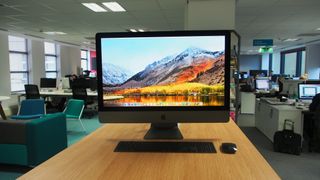
2017 - The iMac goes Pro
Right at the end of 2017, Apple release the iMac Pro. This incredibly powerful version of its iMac all-in-one is designed specifically for professionals, coming packed with workstation components including Intel Xeon processors, 32GB of RAM and an AMD Radeon Pro Vega 56 graphics card.
It's also one of the most expensive devices Apple has ever released, with the base model selling for $4,999 (£4,899, AU$7,299).
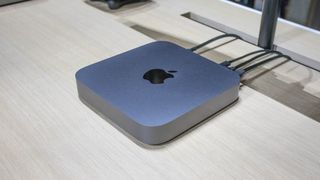
2018 - Revisiting classics
2018 was a year when Apple listened to its fans and updated some of its most popular devices, which hadn't got a lot of love recently. First up is the Mac mini (2018), which was a brilliant – and long over due – upgrade for Apple's diminutive PC, adding some excellent components that make it a great choice for creative professionals.
The MacBook Air also gets a much-needed update with a thinner design, improved screen and updated hardware.
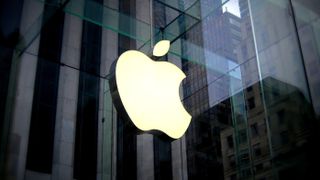
2019 - What does Apple have in store?
Now that we're in the 35th anniversary year of the original Macintosh, could we see another year, like 2018, where Apple revisits some of its previous devices to bring them up to date, or will 2019 be a more adventurous year for the company?
We'll have to wait and see, however Apple has already had an excellent CES 2019 and it wasn't even at the show!
- Here's our pick of the best Macs of 2019
Dan (Twitter, Google+) is TechRadar's Former Deputy Editor and is now in charge at our sister site T3.com. Covering all things computing, internet and mobile he's a seasoned regular at major tech shows such as CES, IFA and Mobile World Congress. Dan has also been a tech expert for many outlets including BBC Radio 4, 5Live and the World Service, The Sun and ITV News.
